Thanks to the Cornell Lab’s app, Merlin Bird ID, saying “Merlin” no longer always means the small falcon: Falco columbarius.
If you’re talking about the falcon in North America there are three subspecies to know: Taiga, Prairie, and Black.
If you’re in Asia—the “steppes of Asia (Aral Sea to Altai Mountains)”—you should also know the Pallid Merlin (Falco columbarius pallidus). If you’re anywhere from the Faroe Islands to central Siberia, or northern Africa in winter, there’s the Eurasian Merlin (Falco columbarius aesalon). On the chance you’re in Iceland: Falco columbarius subaesalon. Siberia’s Yenisey to Kolyma River: Falco columbarius insignis.
I’m only going to cover the part of the world where I bird.
Taiga
HawkWatch explains that the Taiga Merlin “occurs throughout most of North America.” It is the only race of Merlin seen in the eastern half of the United States. Though it is the standard Merlin, plumage varies regionally. It is intermediate in color with markings on the underside and bands on the tail—tipped with white. The adult male is “dark blue above with distinct tail bands, and creamy below with brownish or rufous-brown streaks and whitish throat.”
Prairie
Falco columbarius richardsonii
Taiga takes the east, Prairie takes the west and “southern Canada within the Great Plains.” They are much paler with a thin white eyebrow and no mustache stripe.
Black
Audubon calls Falco columbarius suckleyi a “scarce blackish form.” This form is found along the coast of the northwest—mainly in the forests of the Pacific Northwest. Black Merlin are also found in southern Alaska and occasionally southern California. Darker, their mustache is less distinct.
Merlin are compact. Their meal of choice: small birds, caught in flight. Audubon explains that “since about 1960 [the Merlin] has become a common urban bird in several towns.”
Most migrate; some go to South America. Black Merlin (suckleyi) of the Pacific Northwest are often permanent residents. Some Prairie Merlin (richardsonii) are permanent residents in cities on the northern plains.
When you think “small falcon,” you probably think American Kestrel (Falco sparverius).
The kestrel is our smallest falcon, but Merlin certainly aren’t large. Compared to the kestrel Merlin are stockier and much darker. They measure 10-14 inches from tail tip to bill tip. In migration Merlin can be found in marshes, where I’ve predominantly seen them, and open country. They winter in the open, so can be found in marshes during the colder months.





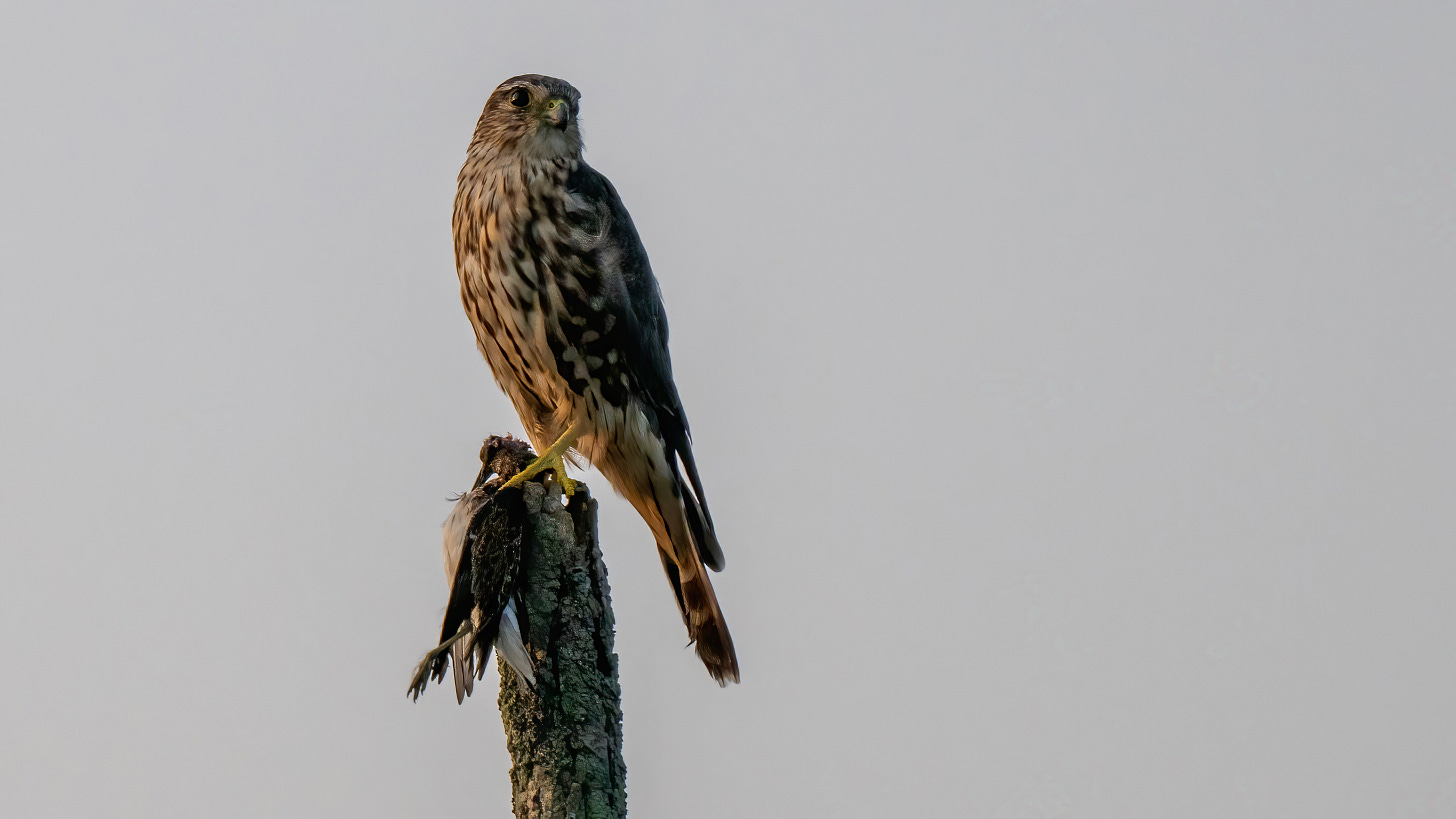
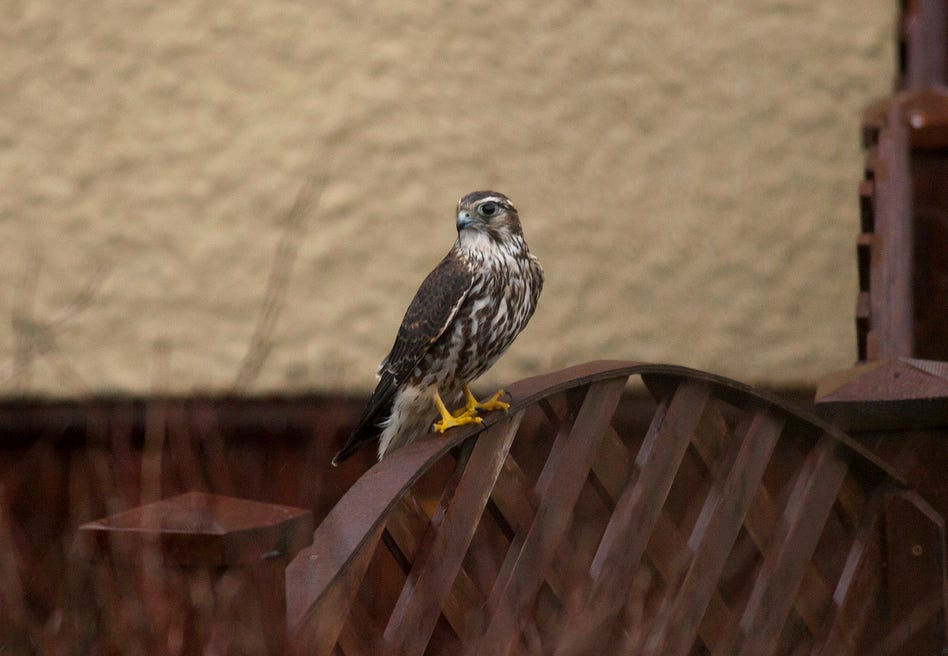


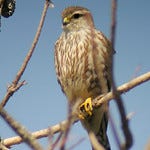
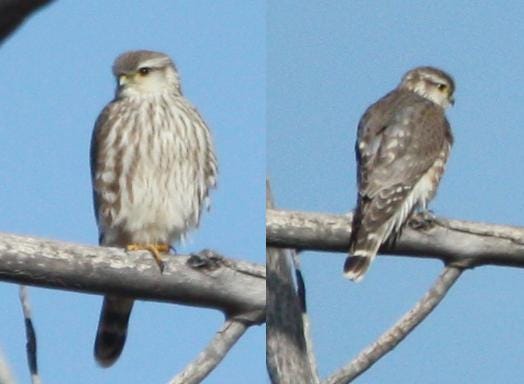

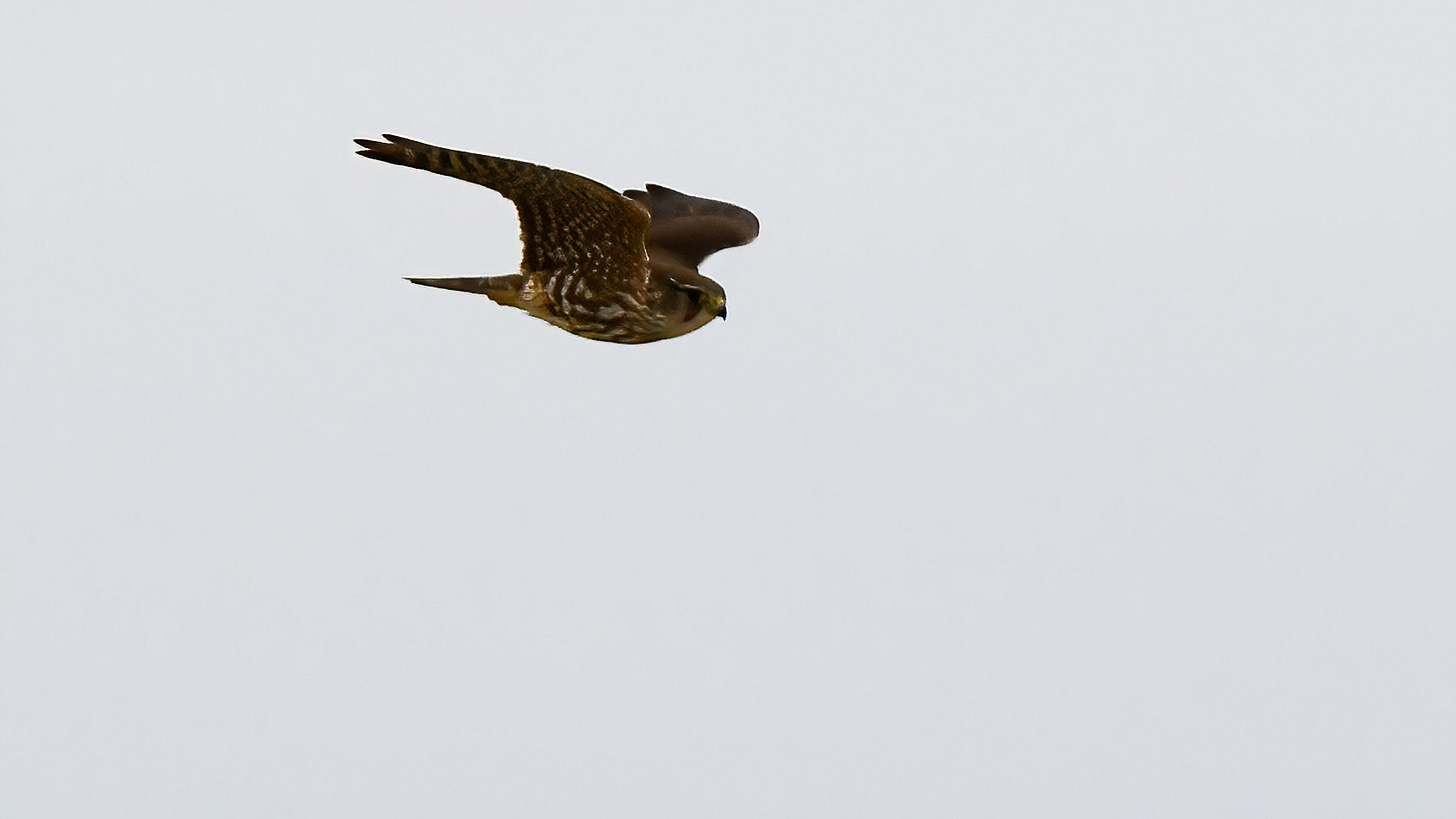



Beautiful photos. I’d love to see a Merlin, they’re VERY rare here.
American Kestrel is up there as one of my favourite ‘birds I’ve yet to see’, so I’d never be disappointed by one of those, either!
It seems I have a good chance of seeing a Black Merlin 🤞🏼